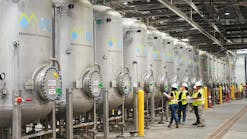The U.S. Environmental Protection Agency (EPA) has announced $1 million in research grant funding to improve wastewater surveillance.
The agency awarded the funds to the University of Illinois Urbana-Champaign to improve wastewater monitoring to rapidly detect the emergence and spread of infectious disease in the current COVID-19 pandemic, and to detect other pathogens.
“As research by EPA and others have demonstrated during the COVID-19 pandemic, wastewater monitoring is an invaluable approach for detecting and tracking infectious disease and ultimately protecting public health,” says Chris Frey, assistant administrator of EPA’s Office of Research and Development. “This forward-looking EPA research grant will improve understanding of the presence of disease-causing pathogens in U.S. communities and support public health officials as they make decisions during pandemics.”
The research awarded under this grant will improve how wastewater surveillance systems are used to detect pathogens in community populations. Innovative research is needed to help create effective wastewater sampling networks to allow for early detection of the spread of infection from national to local levels. Additionally, the data collected during wastewater sampling needs to be made available in a format that can be readily used by public health agencies nationwide to address pandemics.
The researchers plan to develop a system to rank locations where wastewater monitoring should take place to detect disease-causing pathogens. The research will focus on improving the accuracy of predictions using an integrated analysis of data including weather, human mobility, health care, infrastructure, population density, socio-demographics, and information from the current COVID-19 pandemic.
Results from the project are expected to include a transmission forecasting model for wastewater monitoring, a tested system to identify optimal monitoring sites, and a secure platform for data storage and analysis to provide actionable wastewater monitoring information to public health officials for pandemic management. Results will be communicated to public health officials through the National Association of County and City Health Officials (NACCHO), which is collaborating with the grantee on this project. Other collaborators include researchers at the University of Florida and Portland State University in Oregon.



